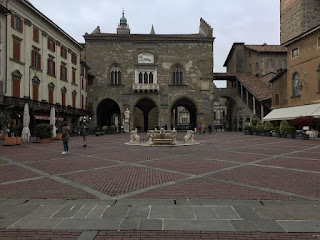Comunardo Niccolai - footballer
‘King of own goals’ was also a champion
The footballer Comunardo Niccolai, a central defender with a propensity for scoring calamitous own goals, was born on this day in 1946 in Uzzano, a beautiful hill town in Tuscany. Niccolai scored six own goals in his Serie A career, which contributed to his standing as something of a cult figure in Italian football. He was actually an exceptionally talented player - good enough to be picked for the Italian squad for the World Cup in 1970, where the azzurri finished runners-up, as well as a key figure in the Cagliari team that won the Serie A title in 1970. But he seemed unable to avoid moments of freakish bad luck and he acquired such unwanted notoriety as a result that people outside the game still reference his name when describing someone doing something to their own disadvantage. For example, during the course of one of the regular political crises in Italy in the late 1990s, the right-wing politician Francesco Storace said of a policy decision taken by prime minister Massimo D’Alema, “Ha fatto un autogol alla Niccolai” - meaning that he had “scored an own goal Niccolai-style”. Read more…
____________________________________
John Paul Getty III released
Heir to world’s biggest fortune held by kidnappers for 158 days
A story that dominated the Italian press and newspapers around the world ended on this day in 1973 when police responding to a tip-off found a shivering, malnourished and deeply traumatised American teenager inside a disused motorway service area in a remote part of southern Italy. John Paul Getty III, grandson of the richest man in the world, the oil tycoon John Paul Getty, had been held in captivity for more than five months by a kidnap gang who had demanded $17 million for his safe return. The boy’s 80-year-old grandfather, whose personal fortune would equate today to almost $9 billion but who was notoriously mean, at first refused to pay a penny and stuck to that position until late November, when a letter containing a lock of hair and a human ear arrived at the offices of a daily newspaper in Rome. After a further letter arrived containing a photograph of John Paul Getty III minus one ear, the octogenarian’s representatives made contact with the kidnappers and negotiated his release for $3 million. Even then, John Paul Getty Senior refused to pay more than $2.2 million, which his lawyers allegedly told him was the maximum he could claim as a tax-deductible expense. Read more…
________________________________________
Frankie Dettori - champion jockey
Milan-born horseman among all-time greats
Lanfranco "Frankie" Dettori, the three-times British champion jockey, was born on this day in 1970 in Milan. As well as winning the UK jockeys' title in 1994 and 1995 and again in 2004, Dettori has won more than 500 Group Races around the world, including 20 British Classics. He won his first Classic in 1994 on Balanchine in the Oaks. He won his first St Leger in 1995 on Classic Cliche, his first 2,000 Guineas in 1996 on Mark of Esteem and his first 1,000 Guineas in 1998 on Cape Verdi, finally completing the set at the 15th attempt when Authorized won the Derby at Epsom in 2007. Dettori won the Derby for a second time in 2015 on Golden Horn, which he rates as the best horse he has ever ridden. English-bred and owned by the diamond dealer Anthony Oppenheimer, Golden Horn won the Derby, the Eclipse Stakes, the Irish Champion Stakes and the Prix de l'Arc de Triomphe for Wiltshire trainer John Gosden during the 2015 season, each time with Dettori in the saddle. Apart from his big-race successes, which also include 24 Group Race wins in Italy and all of the Irish Classics, Dettori is best known for his unprecedented and so-far unequalled achievement of riding the winners of all seven races on a single day at Ascot in 1996. Read more…
___________________________________
The Good, the Bad and the Ugly
Spaghetti western has steadily gained critical acclaim
The film, The Good, the Bad and the Ugly, was released on this day in Italy in 1966. It was the third and final instalment in the Dollars Trilogy, following A Fistful of Dollars and For A Few Dollars More. Despite mixed reviews to begin with, it was a financial success, grossing more than $25 million at the box office. The film has gained respect over the years and is now seen as a highly influential example of the Western film genre and has been acclaimed as one of the greatest films of all time. Directed by Sergio Leone, the film, known in Italian as Il buono, il brutto, il cattivo, was made partly at the Cinecittà studio in Rome and partly on location. It became categorised as a 'spaghetti western' and was distinctive because of Leone’s film–making style, which involved juxtaposing close-ups with lengthy long shots. Clint Eastwood, Lee Van Cleef and Eli Wallach star in the title roles. They are three gunslingers out to find buried gold against the backdrop of the violence of the American Civil War. The score for the film was composed by Ennio Morricone and the iconic main theme for the film became a popular hit in 1968. Read more…
.jpg)
.jpg)
.jpg)
.jpg)
.jpg)


.jpg)

.jpg)

.jpg)



.jpg)

.PNG)